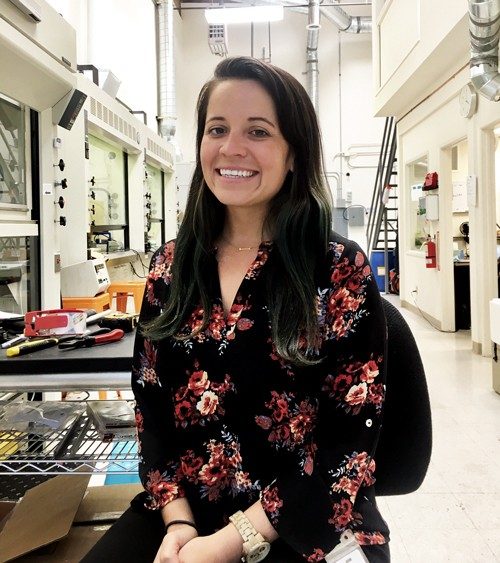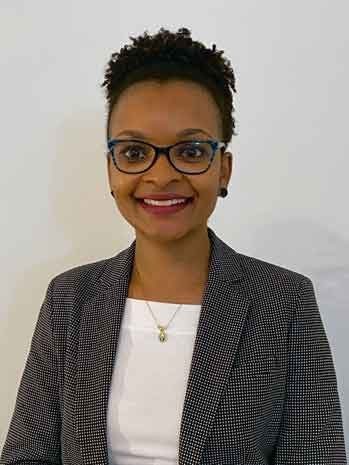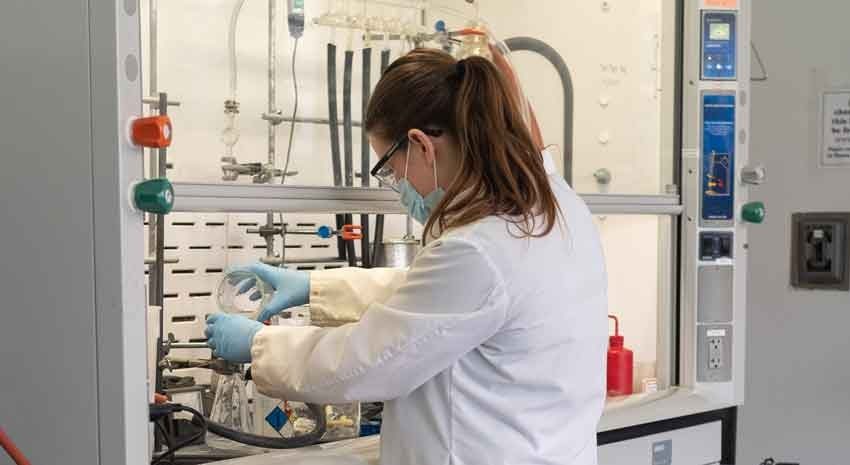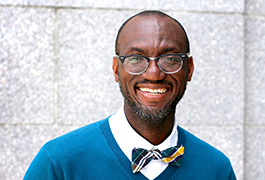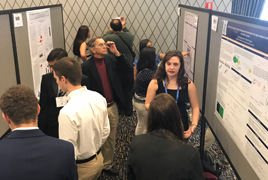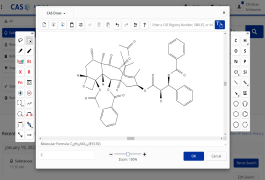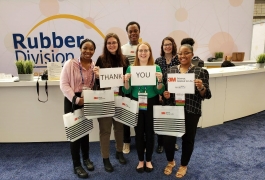Meet the ACS Division of Polymer Chemistry
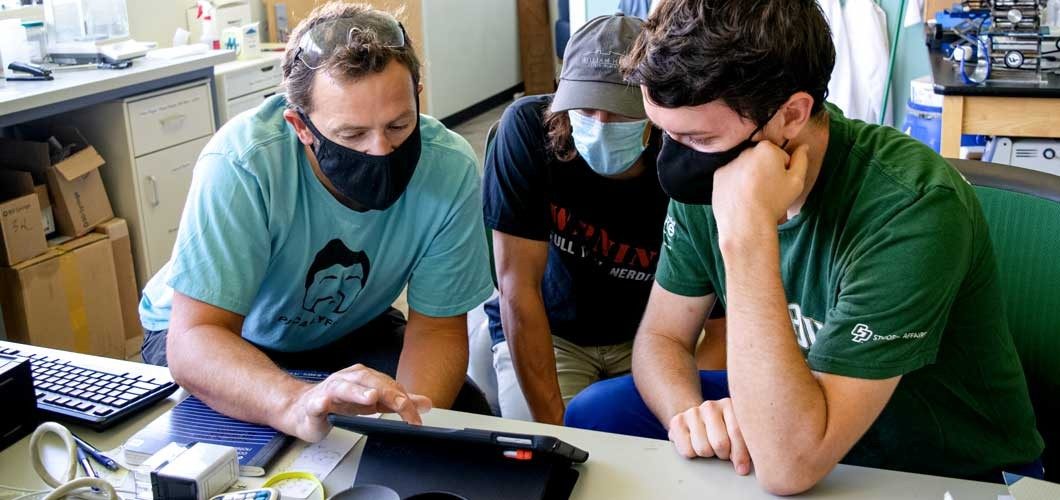
When Katrina Knauer was an undergraduate at Florida State University, one problem loomed large in her mind: plastics. Single-use plastics. From take-out containers to shampoo bottles, they were everywhere. As a chemical engineering major, she was amazed by the chemistry that made these plastics possible. But she worried about environmental impacts. “We have this huge source of waste that we don’t know what to do with,” she recalls thinking.
Today, Knauer is a polymer scientist beginning a new job at the National Renewable Energy Laboratory in Golden, CO. She develops technologies for recycling plastics and works with industry leaders to make those innovations scalable.
Knauer credits landing this dream position, in part, to the relationships she’s built through the ACS Division of Polymer Chemistry (POLY), a community of professionals dedicated to advancing the polymer enterprise and addressing global challenges. As the member-at-large on the POLY executive committee, Knauer encourages ACS members to join—especially students.
Students who join POLY can explore how their own interests in polymer chemistry can lead to a wide range of impactful careers while building connections and gaining professional skills.
Potential in polymers
Polymer structures vary widely, from long molecules that are twisted and tangled together like a bowl of spaghetti strands to repeating blocks or branching chains, resulting in a broad range of properties, says Philip Costanzo, a chemistry professor at California Polytechnic State University, San Luis Obispo. “They have a lot more properties than just a single small molecule because they are so long and they can interact with each other.”
Because of their diverse physical properties, polymers lend themselves to many uses—and career paths. Before beginning her current position, Knauer was a senior scientist at Novoloop, a chemical recycling startup in the San Francisco Bay Area. She helped devise methods for upcycling polyethylene waste from single-use plastics like sandwich bags, turning it into polyurethanes designed for more long-lasting products like running shoes and performance raincoats.
Meanwhile, Costanzo designs new polymers that work as “re-healable” materials. His team modified polymers in soybean oil to create a topcoat for cars that “heals” (or spontaneously self-repairs) with heat. “If you got your car scratched, instead of getting it repainted,” he explains, “you could heat it up with a hair dryer and melt the scratch away.”
Polymer scientists also tackle other challenges, such as drug delivery and sustainable energy. They work in academia, industry, and government. But while the applications for polymer science are expansive, the POLY division helps the community of polymer scientists remain close-knit. “Being involved with POLY really has given me a wonderful support network of colleagues,” says Knauer.
Costanzo is confident that POLY will do the same for students. “It will open up doors for internships, research opportunities, graduate school opportunities,” he says. “The sooner you plug in and interact with people, the more opportunities will pop up.”
Plugging into POLY
Curious about polymers but not sure where that interest could take you? POLY hosts networking events at local and national ACS meetings. They also offer webinars on cutting-edge polymer applications—from fighting the pandemic to 3D printing.
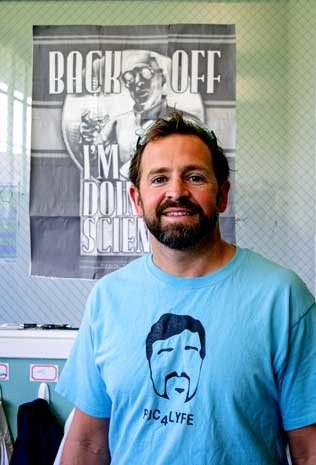
Through these events, you can connect with polymer enthusiasts in a wide range of professions and career stages who can offer insights into their own professional paths. “Especially if you do want to go to grad school, you’ll want to start knowing what people are doing, what kind of research they are working on, what universities are focusing on,” says Knauer.
Some schools also have POLY student chapters jointly supported by the Division of Polymeric Materials: Science and Engineering (PMSE), another ACS division for polymer chemists. POLY/PMSE student chapters are typically formed by graduate students and postdocs but are open to undergrad involvement as well. One of Knauer’s main goals is to encourage more universities to establish student chapters. “I try to get funding to set up networking events and professional development events for the students,” says Knauer.
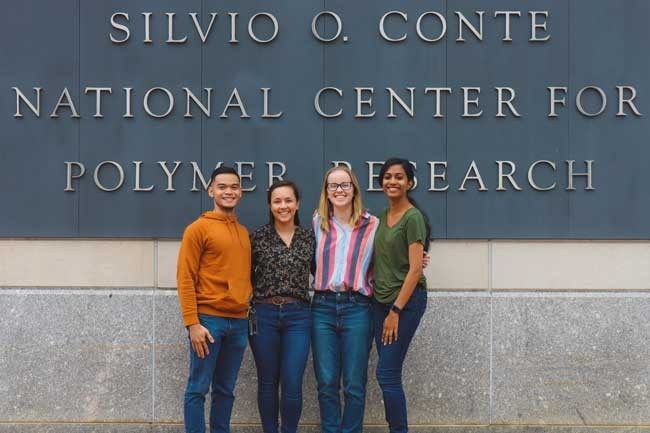
One such event, Random Walks from a PhD, is a symposium series created by the recently formed POLY/PMSE student chapter at the University of Massachusetts, Amherst. “Random Walks is a classic polymer physics term to describe random trajectories of polymer chains,” explains Chapter President Hazel Davis, a PhD candidate in polymer science and engineering whose research focuses on how polymers can be used to deliver proteins for various therapeutic applications. The organizers invite polymer scientists to speak about the twists and turns of their own career trajectories. The first speakers at the symposium, which was launched last summer, included Knauer, a patent agent, and a materials scientist at Nike.
About 25 students joined each of the hybrid virtual/in-person sessions, including numerous undergraduates. Geneva McElvaine, a third-year chemistry major at Rhodes College in Memphis, TN, attended while conducting REU research at UMass Amherst on soft material interfaces. McElvaine isn’t sure what she wants to do after graduation, but the symposium helped her see polymer science as a real possibility. “If I really wanted to make myself known in the polymer science industry, or participate in it, I would know where to start,” she says.
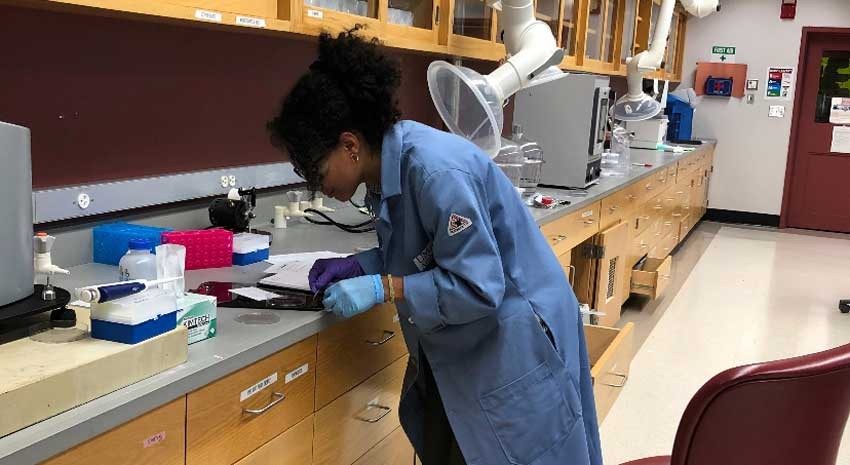
Zachary Ahmad, a fourth-year polymer science and engineering major at the University of Southern Mississippi, also attended the symposium while conducting summer research at UMass, Amherst. Afterwards, Ahmad connected with all of the speakers and many of the attendees on LinkedIn. None of the speakers work in Ahmad’s particular research area: creating flexible electronics for medical applications. But he values these connections for the unexpected ways that their careers may someday overlap. “It made bridges that I can take in the future if I need to,” he says.
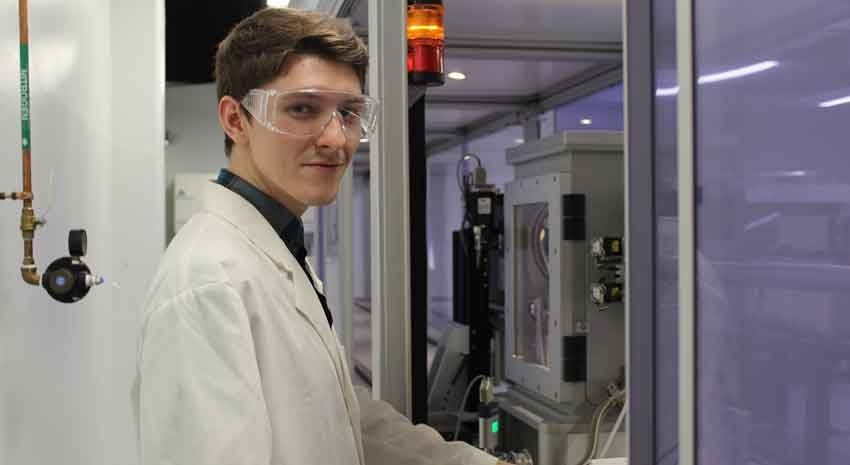
MACRO and more
POLY can also help you develop professional skills for advancing your polymer science career—and the skill building might come with some prizes along the way. POLY recently sponsored a three-minute elevator pitch competition for graduate students at Case Western Reserve University’s ACS POLY/PMSE Student Chapter. Irlaine Machado, a graduate student in polymer engineering, who recently passed her dissertation defense, won $500 for a pithy description of her research on eco-friendly flame retardants. Hitting all of the key points in three minutes was challenging, recalls Machado, who is earning a joint degree from Case Western and the Federal University of Rio de Janeiro in her home country of Brazil. “I needed to practice a lot.”
POLY members can also draw on the many resources provided by the Macromolecular Alliance for Community Resources and Outreach (MACRO), a POLY/PMSE committee that supports curriculum building, community outreach, and professional development. Interested in sharing your love of chemistry with elementary school students? MACRO is compiling a collection of lesson plans certain to thrill the very youngest of chemists, like how to make DIY silly putty and slime.
MACRO’s website can also help you develop professionally by identifying internship opportunities, for example, or learning tips for strengthening your grad school application. “We’re adding more and more things—like how to prepare a résumé, how to write a cover letter, how to write your first paper,” says Costanzo, who leads MACRO along with PMSE’s Dominik Konkolewicz of Miami University in Oxford, OH.
In about a year, MACRO will launch a mentorship program designed to support members at each career stage. Graduate students, for example, will mentor undergraduates and, in turn, be mentored by postdocs. Postdocs will similarly be both mentors and mentees.
Maggie Kumler, a fourth-year chemistry major in Costanzo’s lab with an interest in sustainable polymers, has already found that being both a mentor and a mentee is greatly rewarding. “In our lab, the older students are used as mentors for the first and second years,” she says. “That’s something that I’ve gained a lot of experience in that I’m really grateful for.”
As with other networking opportunities, your POLY mentors and other colleagues can give you heads-ups about openings, write recommendation letters, or even refer you to hiring committees at their own companies. It’s not so much that a company will hire you just because you are a POLY member, but having the connections will make it much easier to get your foot in the door, says Davis. “Really these networks are incredibly vast.”
Getting started
The first year of POLY membership is free to new members. Members keep tabs on POLY events by checking out the POLY website and following the group on Twitter (@POLY_ACS), Facebook (@ACSPOLY), and LinkedIn. If you’d like to meet other POLY members, a great way to start is by volunteering. “Students can reach out to me at any time to find out how to get involved,” says Knauer. “We are always looking for volunteers to help at the national meetings and regional meetings.”
And if you’d like to volunteer to help with any of POLY’s other offerings, just contact the organizers. POLY members are passionate about helping students grow professionally, says Knauer. “That’s my favorite part of POLY, the really strong focus on educating the students and giving them as much opportunity as possible.”

